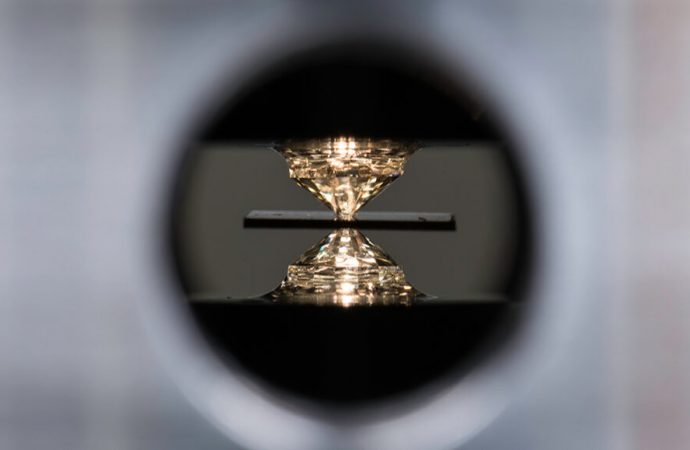The compound conducts electricity without resistance up to 15° C, but only under high pressure
Source: Science News
It’s here: Scientists have reported the discovery of the first room-temperature superconductor, after more than a century of waiting.
The discovery evokes daydreams of futuristic technologies that could reshape electronics and transportation. Superconductors transmit electricity without resistance, allowing current to flow without any energy loss. But all superconductors previously discovered must be cooled, many of them to very low temperatures, making them impractical for most uses.
Now, scientists have found the first superconductor that operates at room temperature — at least given a fairly chilly room. The material is superconducting below temperatures of about 15° Celsius (59° Fahrenheit), physicist Ranga Dias of the University of Rochester in New York and colleagues report October 14 in Nature.
The team’s results “are nothing short of beautiful,” says materials chemist Russell Hemley of the University of Illinois Chicago, who was not involved with the research.
However, the new material’s superconducting superpowers appear only at extremely high pressures, limiting its practical usefulness.
Dias and colleagues formed the superconductor by squeezing carbon, hydrogen and sulfur between the tips of two diamonds and hitting the material with laser light to induce chemical reactions. At a pressure about 2.6 million times that of Earth’s atmosphere, and temperatures below about 15° C, the electrical resistance vanished.
That alone wasn’t enough to convince Dias. “I didn’t believe it the first time,” he says. So the team studied additional samples of the material and investigated its magnetic properties.
Superconductors and magnetic fields are known to clash — strong magnetic fields inhibit superconductivity. Sure enough, when the material was placed in a magnetic field, lower temperatures were needed to make it superconducting. The team also applied an oscillating magnetic field to the material, and showed that, when the material became a superconductor, it expelled that magnetic field from its interior, another sign of superconductivity.
The scientists were not able to determine the exact composition of the material or how its atoms are arranged, making it difficult to explain how it can be superconducting at such relatively high temperatures. Future work will focus on describing the material more completely, Dias says.
When superconductivity was discovered in 1911, it was found only at temperatures close to absolute zero (−273.15° C). But since then, researchers have steadily uncovered materials that superconduct at higher temperatures. In recent years, scientists have accelerated that progress by focusing on hydrogen-rich materials at high pressure.
In 2015, physicist Mikhail Eremets of the Max Planck Institute for Chemistry in Mainz, Germany, and colleagues squeezed hydrogen and sulfur to create a superconductor at temperatures up to −70° C. A few years later, two groups, one led by Eremets and another involving Hemley and physicist Maddury Somayazulu, studied a high-pressure compound of lanthanum and hydrogen. The two teams found evidence of superconductivity at even higher temperatures of −23° C and −13° C, respectively, and in some samples possibly as high as 7° C.
The discovery of a room-temperature superconductor isn’t a surprise. “We’ve been obviously heading toward this,” says theoretical chemist Eva Zurek of the University at Buffalo in New York, who was not involved with the research. But breaking the symbolic room-temperature barrier is “a really big deal.”
If a room-temperature superconductor could be used at atmospheric pressure, it could save vast amounts of energy lost to resistance in the electrical grid. And it could improve current technologies, from MRI machines to quantum computers to magnetically levitated trains. Dias envisions that humanity could become a “superconducting society.”
But so far scientists have created only tiny specks of the material at high pressure, so practical applications are still a long way off.
Still, “the temperature is not a limit anymore,” says Somayazulu, of Argonne National Laboratory in Lemont, Ill., who was not involved with the new research. Instead, physicists now have a new aim: to create a room-temperature superconductor that works without putting on the squeeze, Somayazulu says. “That’s the next big step we have to do.”
Source: Science News

































Leave a Comment
You must be logged in to post a comment.